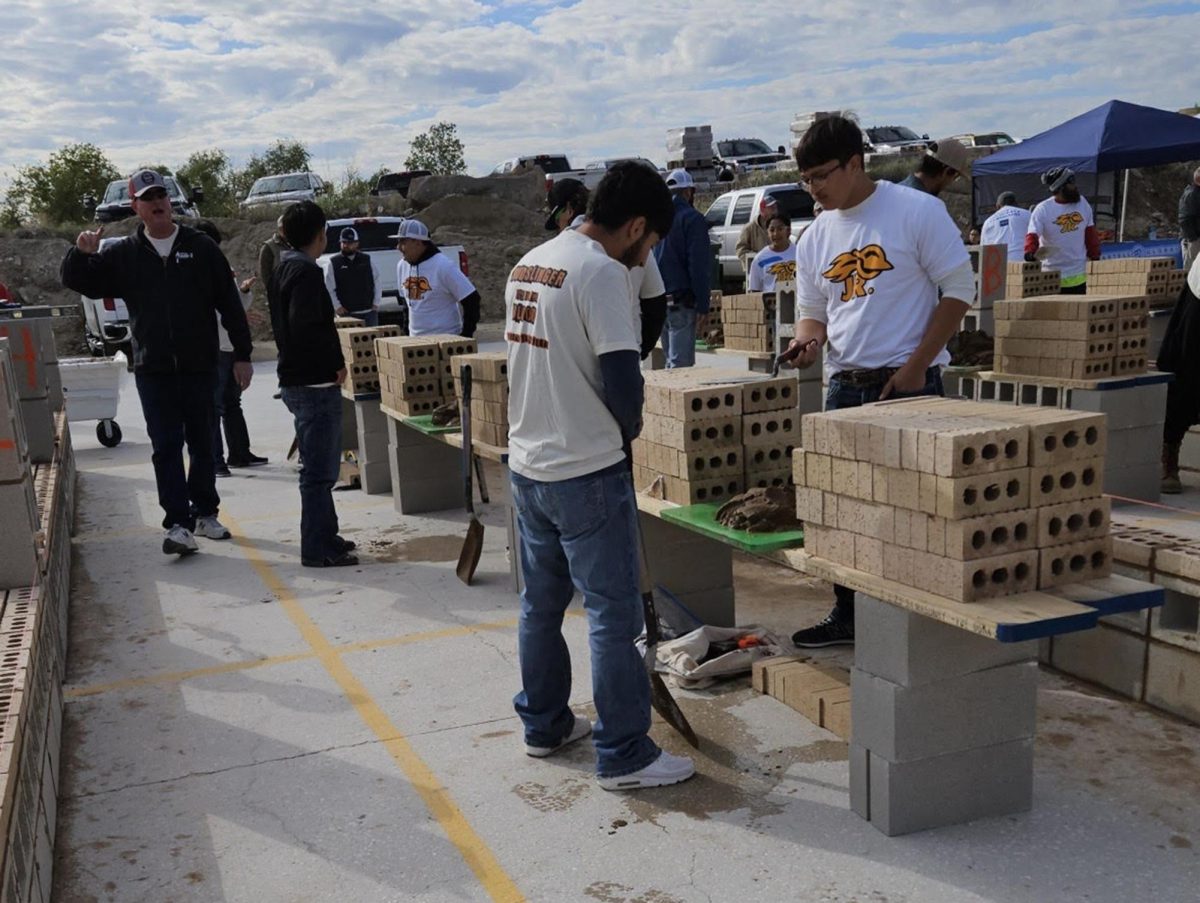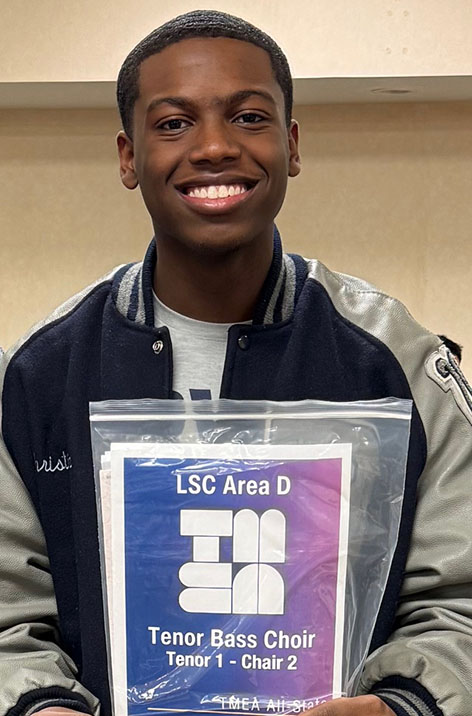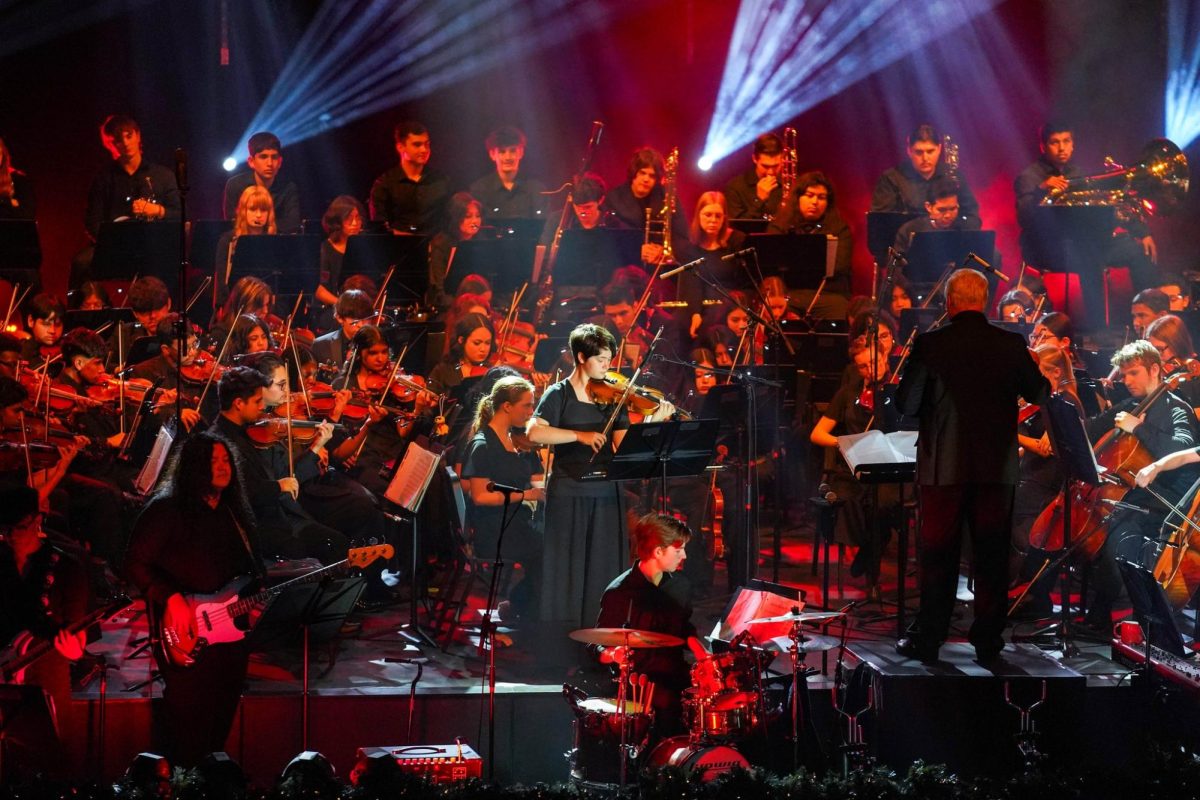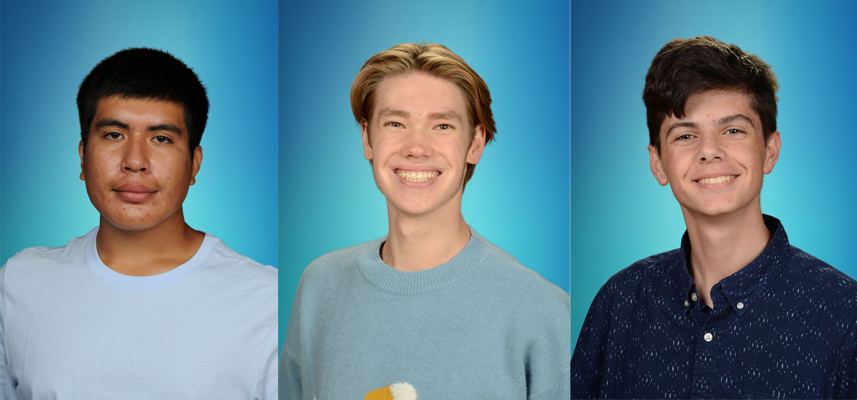Construction science students competed in the SkillsUSA events for teamwork all-around construction, electrical work, masonry, and construction. In the teamwork event, students frame three walls, add electrical work, and install plumbing in only four hours. In masonry, students lay bricks following a specific design, and in electrical wiring, students wire receptacles, outlets, switches, and light bulbs.
Erick Ledesma, Angel Villanueva, Anthony Esquivel, and Jairo Rodriguez Rodriguez placed first in the teamwork all-around construction. For electrical construction wiring, Orlando Melendez took first place and for masonry brick laying, Joshua Kelbly earned first place.
“We did well at SkillsUSA,” construction teacher George Guajardo said. “It felt good to come back with a win in every category, and we are excited about heading to State in April.”
To prepare for the masonry events, students had races during class to see who could lay the most bricks in a certain amount of time to prepare them for contest scenarios where they would not be able to ask for help from their teacher, an aspect which is difficult for students and the teacher.
“It is difficult for me not to be able to help them or give them advice,” Guajardo said. “I can only watch during the competition, and it is difficult as a teacher when I see them make a mistake and not be able to tell them or help them fix it.”
Understanding the engineering concepts and making sure their work is aesthetically pleasing are two of the most important aspects of working in masonry and construction.
“We had to build a certain structure in a certain amount of time, and we had to make sure it looked good,” construction student freshman Joshua Kelbly said. “The most difficult part was keeping it clean because they take points off if it’s super dirty.”
Construction student freshman Emanuel Ordaz said that he used YouTube videos and lessons on how to butter bricks properly to enhance his skills and prepare for the competition.
“Laying the brick was difficult because of the timing and having to know how much space I needed,” Emanuel said. “Bricklaying takes time and patience, but with the right training you can get it perfect.”
For many of the students, seeing the finished product is one of the most rewarding parts of working in the construction field.
“I thought it was pretty cool that we won first place,” Joshua said. “Completing the event was the most rewarding part because I saw the work I did from start to finish.”
CTE specialist Parker Knutson observed the students when they went through masonry training and were given a design plan to implement which included brick turns and structural work.
“They can’t just lay the bricks in a straight line; they have to really understand how masonry works,” Knutson said. “The students had special rulers that they had to use that I had never seen before, and with all kinds of lines and numbers. It’s a lot more complicated than many people think.”
Not only does the material learned in class allow students to participate in competitions, it also allows them to apply those same skills to future careers in construction.
“I think masonry creates a well-rounded student and touches on a lot of different skills,” Knutson said. “It incorporates science because students have to mix things to the right consistency. If it’s off, the integrity of the structure is not there. Masonry and construction incorporate a lot of different skills and a lot of different curricula.”
Knutson said that he believes getting students involved with construction helps them understand the importance of building their skill set.
“The students that we have in our construction classes are looking for something to add to their skills,” Knutson said. “The opportunities that they have to work in the industry have been instrumental for them, which has piqued their interest and pushed them to keep going.”







